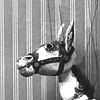[280] A Walk away the Park.
First issued October 2015. Reissued May 2020.
This post will be slightly different, inspired by a visit to the Park.
This is Bletchley Park, now open to the public, where UK intelligence services worked during the War to obtain information about German forces.
In the Seventies I worked at GCHQ, when the existence of GCHQ was a secret known to few. GCHQ had developed from the wartime work at Bletchley, which was even more secret. Perhaps I knew then more about Bletchley but now much of it is publicly known.
The park is now set up to show things about life in the Forties. Much of it is so close to the Fifties and Sixties that I can use it to illustrate my memories. This post will have all of its pictures from Bletchley with comments reflecting life from the Forties to the Seventies.
This is the main house. All the codebreaking was done in huts out of sight from the house.
Alan Turing, who worked here, is now more well-known and has been portrayed recently in the film, the Imitation Game. When I visited, the house contained material used in the sets for this film, some of which is shown here.
This sign, at the entrance to the house, mentions early computers. I will have more to say about computers in a later post.
Enigma
As you may now know, the Enigma was a code machine. Its interception and codebreaking – at Bletchley were important to the British success in the war.
This is one of the Enigma machines. When a lettered key was pressed, its coded version appeared.
It contained a number of wheels as shown here, which were removable and interchangeable. Below is part of the ‘bombe’, the machine constructed and used at Bletchley to decode Enigma – not the real ones, reconstructions for the Imitation Game.
Radio Interception
These pictures above show table, chairs and filing cabinet that could have been from the Seventies, with radio equipment typical of the Forties.
Below is a display from Bletchley about ‘Y’ Stations, radio intercept provided by the forces. [Click on the picture to expand it and read.] I put this in because it must be close to what my father did during the War. He served in the RAF and said very little about it, but he talked of taking down Morse intercept in Burma (now Myanmar.) It was not quite the same as English Morse – as they had extra Burmese letters.
[Most people did not talk of what they did in the War. Perhaps I should have asked him later. Dad will probably have a blog to himself later.]
Inside Bletchley Museum
A selection of pictures showing life from the Forties, generally applicable to the Fifties and Sixties.
Here are some school desks. At ICHS they were similar to those at the front, with a place for an inkwell and a groove for pens and pencils. I think we had only single desks but they were placed in pairs like this, 32 to a class. Everything stayed inside the desk. We had no personal lockers.
So much here is familiar – the cooker, with its plate rack, kitchen cupboard, saucepans and the sink in the background. I have done a post about kitchens.
A typical room from the Fifties. Note first the flooring – mostly bare lino with a rectangular patterned carpet. Fitted carpets were unheard of. Table, tablecloth and chairs are very familiar. Basket, cups and saucers (never mugs,) and the settee with its antimacassar could have been ours.
I’m not sure how typical this is but I think the clothes could be Fifties. Note the clothes horse in the middle. You could use this to dry clothes by the fire indoors when it was raining outside.
Not a good picture (taken through glass) but a simple electric fire.
A gramaphone, a little earlier that the record-players that came with pop music in the late Fifties. Occasionally I remember something similar at Highlands – wound up and using clockwork!
Offices
From the house at Bletchley, showing some office equipment. The house is probably more upper class. The large wooden desk was typical of the Sixties. Chairs, tables, lamps and typewriters could also be Sixties.
This picture, as well as the desk, shows a waste paper basket (when they were baskets,) and the heavy telephone, firmly attached with its thick cable to the wall.
A metal filing cabinet. We had hundreds like this at GCHQ. Each drawer could hold dozens of loose folders, each holding perhaps hundreds of paper documents. We only had paper documents – no computers.
This typewriter is perhaps a little early for office work in the Sixties, but very similar.
Tables, chairs perhaps basic, always wooden. Note the ash tray on the desk. Smoking was very common.
A few more unrelated pictures from Bletchley:
A radiator, seen in the Gents toilet. Of course, in the Fifties and Sixties, central heating in houses was very rare. These chunky radiators would have been seen in offices – and in houses much later.
Sadly this telephone box at Bletchley no longer has the working telephone inside. These used to widespread and common throughout Britain.
Finally, nothing to do with the Fifties or Sixties but here are some pictures from around the lake.
A juvenile Moorhen (above) and a Grey Heron.
If you haven’t been to Bletchley I would recommend a visit. There is also an excellent café/ restaurant.
More to come about computers.


















































